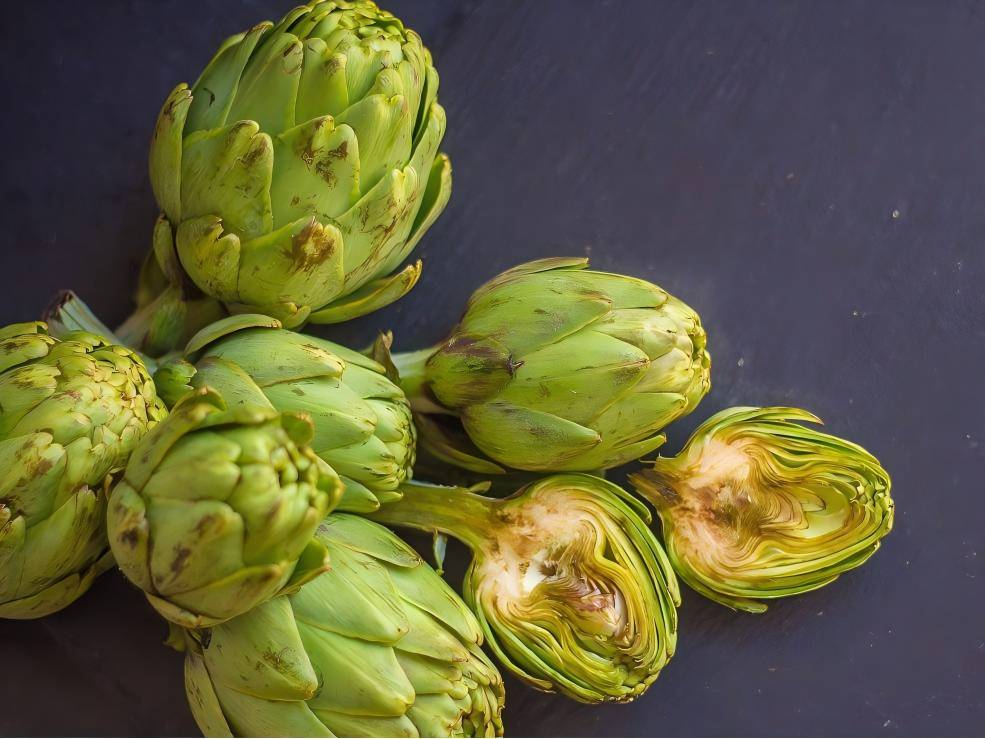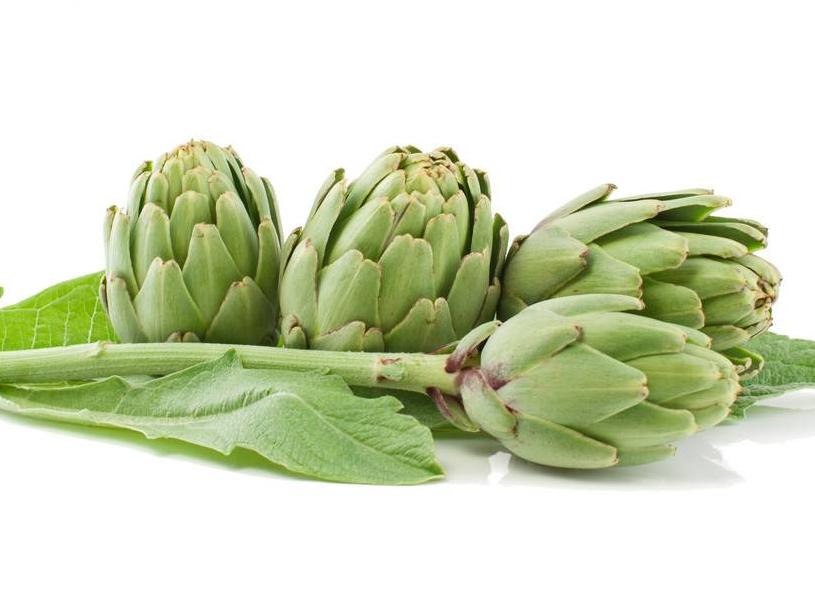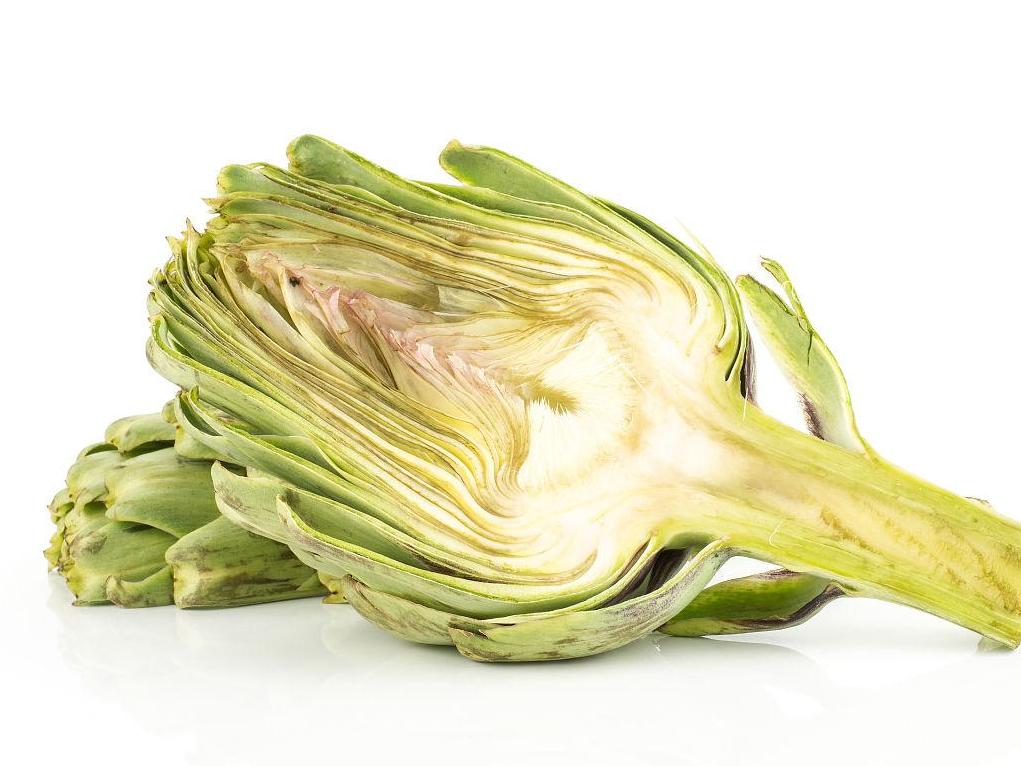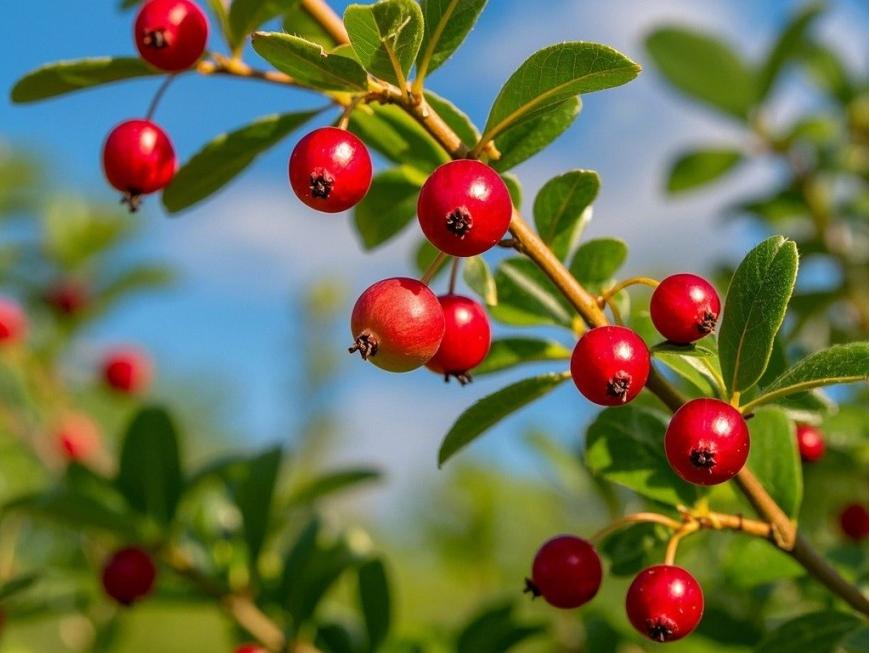Study on Artichoke Lowers Blood Sugar
Artichokes are plants in the Aster family (Compositae), also known as European artichokes or garden artichokes[1]. Native to the Mediterranean region, they have a long history. They were introduced to China from France, but due to their requirements for climate, soil and cultivation techniques, they have not been able to be commercially produced in China. Currently, there are small-scale planting bases in Yunnan, Shanghai, Shandong, Zhejiang and other places[2]. Domestic and foreign studies have shown that artichoke extract has high medicinal value and is effective against diabetes. Artichoke extract contains various bioactive ingredients such as polyphenols[3- 4], flavonoids[5] and terpenoids[6]. Its hypoglycemic function often does not work through one ingredient, but through the synergistic effect of multiple ingredients. Currently, research on the hypoglycemic effect of artichoke mainly focuses on artichoke extracts, while there is less research on the hypoglycemic effect of specific components. This review summarizes the hypoglycemic effect, mechanism and clinical research of artichoke extracts, providing a reference for their further development and utilization.
1 Animal studies on the hypoglycemic effect of artichoke
Heidarian E et al. [7] used streptozotocin (STZ)-induced diabetic rats as test subjects to evaluate the hypoglycemic effect of artichoke leaf water extract. The researchers randomly divided the rats into 4 groups (n=6/group): Group I was the normal control group (frozen saline), group II was the diabetic control group (single dose of STZ induction (60 mg/kg body weight)), group III was the diabetic rat treated with artichoke extract (artichoke extract (200 mg/kg/d) was orally administered 5 days after STZ induction), and group IV were diabetic rats treated with artichoke extract (oral administration of artichoke extract (400 mg/kg/d) 5 days after STZ induction). After 21 days of administration, the results showed that artichoke extract significantly reduced blood glucose in diabetic rats. Therefore, the hypolipidemic effect of artichoke extract can prevent and treat diabetic complications.
In order to evaluate the ability of artichoke extract to lower blood glucose through mechanisms other than fiber removal, Fantini N et al. [8] used artichoke bud extract that did not contain any fiber, eliminating the role of dietary fiber in lowering blood glucose. Artichoke buds were extracted with 70% ethanol, and the effects of artichoke bud extract (mass concentrations of 0, 500, 1,000, and 1,500 mg/kg) on Wistar and genetically obese Zucker rats were studied. Blood glucose was measured after feeding the extract for 60, 120, and 360 minutes. The results showed that postprandial blood glucose was significantly reduced in the two rat strains treated with artichoke bud extract, confirming the hypoglycemic effect of artichoke preparations in laboratory rodents.
2 Clinical studies on the hypoglycemic effect of artichoke
Nazni P et al. [9] divided 30 type II diabetic patients who were not receiving insulin or drug therapy into two groups: a control group (15 people) and another group that was given artichoke-wheat biscuits containing 6 g of artichoke powder (4 biscuits per day, 2 in the morning and 2 in the evening) for 90 days. The results showed that there was no significant difference between the initial and final values of fasting blood glucose and postprandial blood glucose in diabetic patients in the control group, while the fasting blood glucose of the diabetic patients in the test group decreased from 163.4± 4.39 mg/dL to 138.8± 3.9 mg/dL (p<0.01), and the postprandial blood glucose decreased from 262.22± 3.82 mg/dL to 241.75± 3.46 mg/dL (p<0.01). This study suggests that the significant change in blood glucose in patients with type 2 diabetes may be due to the hypoglycemic effect of globe artichoke powder. Rondanelli M et al. [10-11] further demonstrated the hypoglycemic effect of artichoke in their study of artichoke extracts.
In 2011, Rondanelli M et al. [10] combined a dry extract of green beans containing α-amylase inhibitors and phytohaemagglutinins with an artichoke extract high in caffeoylquinic acids and flavonoids in a certain ratio to obtain a dietary supplement. A 2-month randomized, double-blind, placebo-controlled trial was conducted in 39 overweight subjects (20 supplement groups, 19 placebo groups) by orally administering the dietary supplement or placebo three times a day (before breakfast, lunch and dinner). a 2-month randomized, double-blind, placebo-controlled trial was conducted in 39 overweight subjects (20 dietary supplement group, 19 placebo group) by administering the dietary supplement or placebo orally three times a day (before breakfast, lunch and dinner). The efficacy of the dietary supplement of plantago psyllium and artichoke extract was evaluated by studying satiety, anthropometric parameters (body weight and height), blood sugar, lipid parameters, psychodynamic patterns (Three-Factor Eating Questionnaire), to evaluate the efficacy of dietary supplements of plant-based kidney bean and artichoke extracts. After the end of treatment, the homeostasis model assessment, body mass index and susceptibility scores in the dietary supplement group were significantly reduced, confirming that this treatment seems to have a therapeutic effect on overweight and abnormal blood glucose.
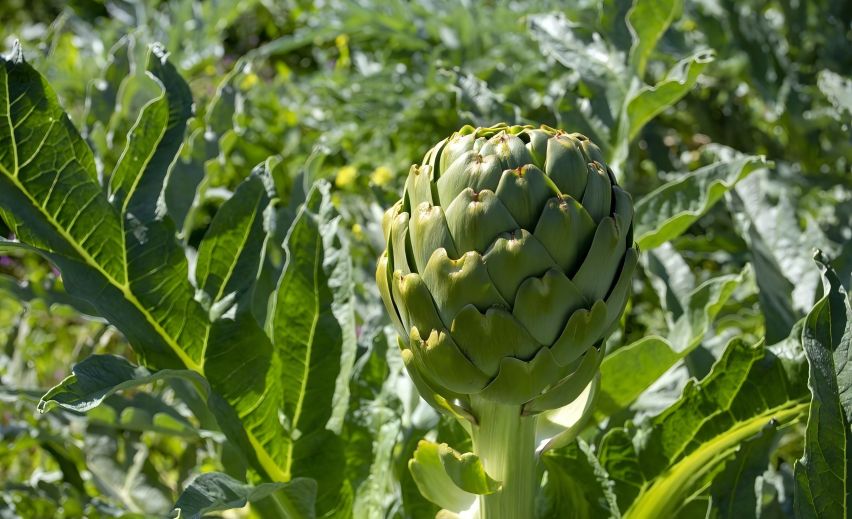
The study only demonstrated the hypoglycemic effect of a combination of kidney bean and artichoke extracts, and did not clarify whether artichoke extract alone would have the same effect. Therefore, in 2014, the researchers conducted a double-blind, randomized, placebo-controlled clinical trial on patients with impaired fasting glucose (IFG) [11]. 55 overweight subjects with impaired fasting glucose (IFG, fasting blood glucose 6.11± 0.56 mmol/L) overweight subjects were randomly selected. Among them, 26 subjects were randomly selected to take oral artichoke extract tablets, while the other 29 subjects took a placebo.
After 8 weeks of treatment, fasting blood glucose (FBG), glycosylated hemoglobin (HbA1c), glycosylated hemoglobin-derived average blood glucose (ADAG), lipid profile (including TC, LDL-C, HDL-C and TG), anthropometric parameters, etc. were measured, and insulin resistance was examined using the homeostasis model (HOMA). The results showed that compared with the placebo group, the artichoke extract group had significantly lower FBG (-9.6%), HOMA (-11.7%), glycosylated hemoglobin (-2.3%), ADAG (-3.1%) and lipid patterns; and the study confirmed that artichoke extract has the effect of lowering glucose metabolism parameters in overweight subjects with IFG.
3 Research on the hypoglycemic effect and mechanism of artichoke
3.1 Antioxidant effect prevents the occurrence and development of diabetes
The anti-oxidant effect of artichoke can lower blood glucose by protecting pancreatic β cells from oxidative stress damage. Diabetes is a metabolic disorder syndrome [12], and its pathogenesis is complex. Its condition is related to the level of free radicals in the body [13], and the level of antioxidant enzymes in pancreatic β cells affects both the cell's ability to resist free radical damage and the release of insulin [14]. The accumulation of free radicals in the body of diabetic patients can cause serious damage to tissues such as blood vessels, nerves and the lens, leading to complications such as diabetic nephropathy, cardiovascular and cerebrovascular diseases, peripheral neuropathy and eye lesions [15]. Many studies have shown that artichoke extract has strong antioxidant activity.
Song Shuhui et al. [5] demonstrated the antioxidant effect of artichoke leaf extract using four different in vitro antioxidant systems. Yang Haiying et al. [16] evaluated the antioxidant activity of artichoke leaf extract using rutin as a reference. When the mass concentration of artichoke extract was 0.8 mg/mL, the scavenging rate of superoxide anions reached 92.92%, exceeded that of rutin at the same mass concentration. At a mass concentration of 0.5 mg/mL, the scavenging rate of hydroxyl radicals reached 85.65%, which was slightly lower than the corresponding control. At a mass concentration of 1 mg/mL, the ability of artichoke extract to scavenge DPPH radicals exceeded that of rutin at the same mass concentration. Jun N et al. [17] studied artichoke (heads, bracts, leaves) showed that the antioxidant activity of artichoke (ABTS method) is closely related to the total flavonoid content. Wang M et al. [18] and Shang Fengcai et al. [19] also demonstrated that the higher the content of phenolic compounds, the stronger the antioxidant activity.
3.2 Preventing lipid metabolic disorders and slowing the onset of diabetes
Lipid metabolism disorders can lead to insulin resistance in diabetic patients [20-21], i.e., a decrease in insulin sensitivity. In obese patients, lipolysis is vigorous, intracellular triglyceride decomposition releases more free fatty acids, and increased secretion of free fatty acids can cause an increase in lipid levels in the islets, impairing the function of islet β cells, reducing insulin secretion, resulting in hyperglycemia, and exacerbating the occurrence and development of diabetes [22]. Shimoda H et al. [23] found that methanol extract of artichoke significantly inhibits elevated serum triglycerides (TG), normalizes blood lipid levels, prevents lipid metabolism disorders, and has a preventive effect on diabetic complications. Furthermore, Gebhardt R [24] showed that artichoke extract effectively blocked the stimulation of insulin on the activity of HMG-CoA reductase, and also found that luteolin effectively blocked the effect of insulin on cholesterol biosynthesis, thereby lowering blood lipids.
3.3 Active ingredients of artichoke for lowering blood sugar
3.3.1 Active ingredients for lowering blood sugar
The active ingredients in natural products with hypoglycemic effects include flavonoids [25- 26], terpenes [27], polysaccharides [28- 29], saponins [30- 31] and alkaloids [32- 33]. At present, there are not many articles on the preparation of monomer compounds from artichokes and further research on their hypoglycemic effects. However, the hypoglycemic effects of flavonoids, caffeoylquinic acids and terpene compounds in other plants have been studied more and their effects are significant. A review of their hypoglycemic effects from the perspective of compounds is intended to provide a basis for research on the hypoglycemic components of artichokes.
(1) Flavonoids
Flavonoids can lower blood glucose by stimulating insulin release, inhibiting α-glycosidase, and increasing insulin sensitivity. Xiao Gengsheng et al. [34] found that citrus peel flavonoids have a hypoglycemic effect on mice with diabetes induced by alloxan. Among them, the high-dose group significantly reduced the serum blood glucose levels of diabetic mice, enhanced SOD activity in the serum and liver, inhibited the production of MDA, reduced the content of TG, TC and LDL-C in the plasma, and increased the content of HDL-C. Li Dan [35] used STZ-induced diabetic rats as an animal model to show that total raspberry leaf flavonoids can significantly lower blood glucose levels (a 31.5% glucose-lowering effect) in diabetic rats, increase serum insulin levels, increase SOD activity in rat serum, and reduce serum malondialdehyde levels. Ning Yuebao et al. [36] used a black onion crude flavonoid solution to treat mice with hyperglycemia induced by alloxan, and observed the changes in blood glucose levels after 14 days. The results showed that the blood glucose reduction rates in the medium and high dose black onion crude flavonoid groups were 40.85% and 64.41%, respectively.
In addition, luteolin, as the main component of flavonoids, may also play a role in lowering blood sugar. Some studies have shown that luteolin has stronger inhibitory activity against α-glucosidase than the hypoglycemic drug acarbose, indicating that it may effectively inhibit postprandial hyperglycemia in patients with non-insulin-dependent diabetes [37]. Brown J E et al. [38] compared the hypoglycemic effect of luteolin (1 μmol/L) with that of luteolin-rich artichoke extract (20 μg/ml). Both had similar abilities to inhibit lipid peroxidation, indicating that luteolin may be a hypoglycemic component.
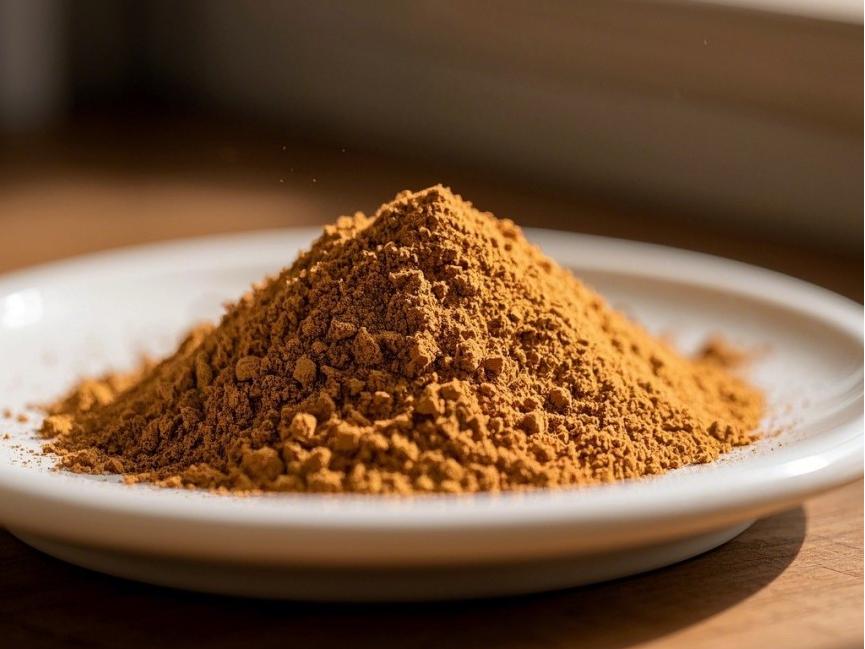
(2) Phenolic acids
Vinayagam R et al. [39] showed that caffeic acid supplements can significantly reduce plasma glycated hemoglobin, urinary glycosylated albumin, and the activities of aldose reductase and sorbitol dehydrogenase. Chlorogenic acid can exert an anti-diabetic effect by improving glucose and lipid metabolism. can inhibit the activity of the key enzyme G6Pase in gluconeogenesis, thereby reducing intestinal glucose transport and hepatic glucose production. Artichoke is rich in caffeoylquinic acid compounds: chlorogenic acid is the most abundant monocaffeoylquinic acid [40], and 1,5-dicaffeoylquinic acid is the most abundant dicaffeoylquinic acid [41].
(3) Terpenes
Wang Jingru et al. [42] studied the effect of total triterpenes from guava leaves on blood glucose in rats with type 2 diabetes established by a high-fat high-sugar diet plus intraperitoneal injection of a low dose of streptozotocin. The results showed that total triterpenes from guava leaves can significantly lower blood glucose levels in rats with type 2 diabetes, improve disturbed glucose and lipid metabolism, and increase serum insulin levels. Shao Changsen et al. [43] used STZ-induced diabetic SD rats as the subject and also confirmed the good hypoglycemic effect of the triterpenoids in the plantain.
Shimoda H [23] showed that the methanol extract of artichoke leaves can inhibit the increase in serum triglycerides in olive oil-loaded mice. The most active fraction, which was extracted with ethyl acetate, and obtained three terpene compounds: artichoke bitterin, aguerin B and arosheimin. Further studies have shown that sesquiterpenes with an oxygen functional group in the α-methylene-γ-butyrolactone ring and an exomethylene part have anti-hyperlipidemic activity. Their lipid-lowering function may improve cardiovascular function. Whether it can prevent the occurrence of diabetes remains to be studied.
3.3.2 Activity and content of the main hypoglycemic components in artichoke
The phenolic compounds in artichoke are mainly caffeoylquinic acid compounds, luteolin derivatives and apigenin. The caffeoylquinic acid compounds mainly include chlorogenic acid (5-O-caffeoylquinic acid), 1,5-, 3,4-di-O-caffeoylquinic acid and artichoke acid. These phenolic substances have significant scavenging activity against reactive oxygen species (ROS) and free radicals, and can be used as a protective pool against oxidative damage to biomolecules such as proteins, lipids and DNA [44].
Wang M et al. [18] used the DPPH method to test the activity of the isolated compounds, and the order of activity was artemisinin > luteolin 7-O-glucoside, luteolin-7-rutinoside (with 2 adjacent hydroxyl groups on the B ring) > chlorogenic acid, 1-caffeoylquinic acid (with 2 adjacent hydroxyl groups on the same phenolic ring) > apigenin-7-rutinoside, naringin (with 2 hydroxyl groups on different phenolic rings).
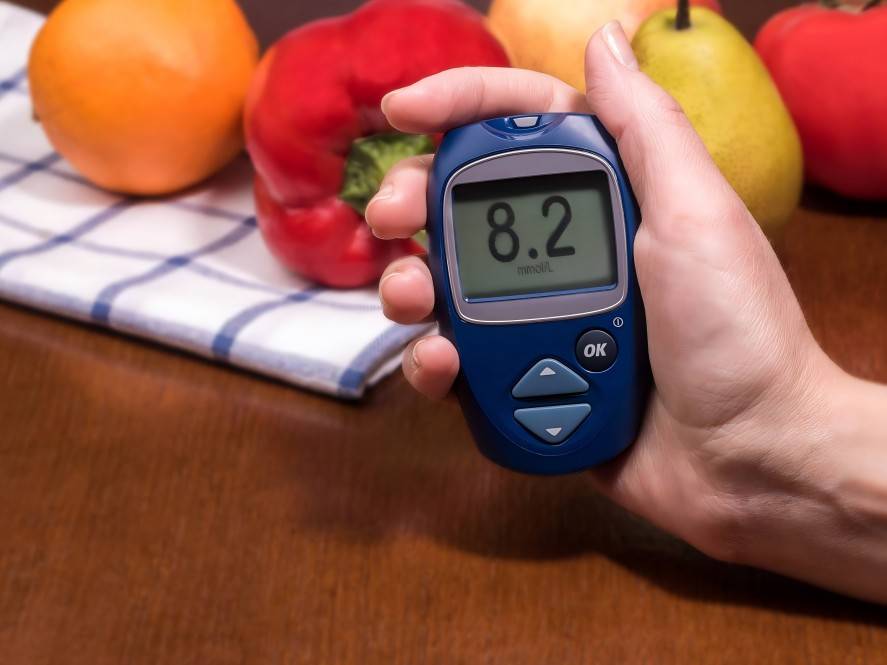
Wang M et al. [18] found that the highest phenolic content was in the leaves of the artichoke, and that the immature heads had a higher phenolic content than the mature heads. In artichoke inflorescences, the content of apigenin derivatives ranged from 2 644 (variety Tondo di Paestum) to 7 478 mg/kg (variety Cimiciusa of DM), the content of caffeoylquinic acids ranged from 71 (variety Cimiciusa) to 2 514 mg/kg (variety Violetto di Sicilia), 25 (Cimiciusa) ~ 492 mg/kg (Tondo di Paestum), the results indicate that artichoke inflorescences can be a source of phenolic acids and flavonoids, and that eating artichokes is a good dietary source of apigenin and other flavonoids.
Caffeoylquinic acid compounds were found in the inner bracts up to 5771 mg/kg (inner bracts of the Violetto di Sicilia variety), and the content of apigenin derivatives in the receptacle was up to 5397 mg/kg (receptacle of the Tema 2000 variety). A study detected 35.19% of the phenolic compounds in artichoke leaves as apigenin-7-glucoside. Chlorogenic acid is the main monocaffeoylquinic acid compound in artichokes. It is found in 14 841 mg per kg of dry matter in the bracts of Violetto di Sicilia and in 3 143 mg/kg DM in the artichoke head, second only to 1,5-O-dicaffeoylquinic acid.
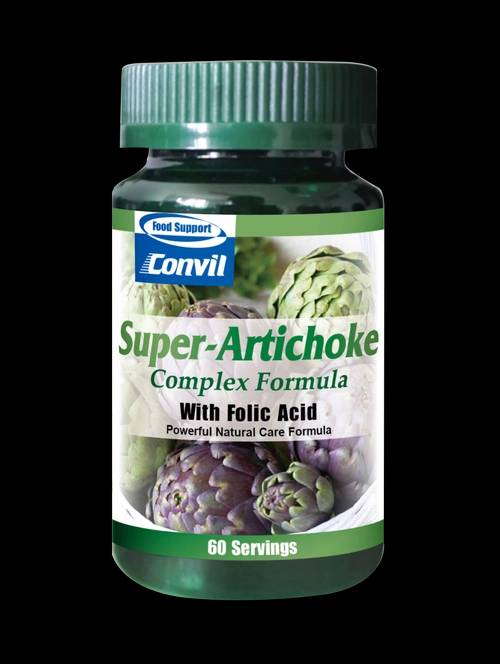
4 Conclusion
Artichokes contain a variety of phenolic acids, flavonoids and guaiolide compounds that can improve diabetes and its complications in multiple ways. However, further research is needed to determine which components play the main role and whether the components have synergistic or antagonistic effects. Due to the annual increase in diabetes and its complications, which threaten people's health, the development of artichoke health products with hypoglycemic function will be welcomed by the public.
References:
[1] Zhang Xiaoyou, Chen Wenliang, Zhou Yun, et al. Process research on the separation and purification of artichoke in artichoke leaves by membrane separation technology [J]. Food Industry Science and Technology, 2011, 32(4): 255-257.
[2] Song Shuhui, He Hongju, Wu Xingde, et al. Analysis of the nutritional composition of artichoke [J]. Journal of Nutrition, 2006, 28(3): 273-274.
[3] Zhao Youyi, Wang Qizhi, Zhang Jianhua, et al. Optimization of the extraction process of total phenolic acids from artichoke by orthogonal test method [J]. Food Research and Development, 2013, 34(20): 15-17.
[4] Lei Song, Wang Bohua, Zhang Pingxi, et al. Development of artichoke dietary fiber biscuits [J]. Agricultural Products Processing, 2015 (22): 1-5, 8.
[5] Song Shuhui, Zhang Limei, Bao Shanfen, et al. In vitro antioxidant effects of artichoke leaf extract [J]. Food Research and Development, 2011, 32(5): 41-45.
[6] Xu Linlin, Cao Jianxin. Research progress on the chemical composition and pharmacological activity of artichoke [J]. Natural Product Research and Development, 2012, 24(8): 1135-1140.
[7]Heidarian E ,Soofiniya Y. Hypolipidemic and hypoglycemic effects of aerial part of Cynara scolymus in streptozotocin-in- duced diabetic rats [ J]. J Med Plant Res , 2011(13): 2 717-2 723.
[8]Fantini N , Colombo G , Giori A , et al. Evidence of glycemia-lowering effect by a Cynara scolymus L. extract in normal and obese rats [J] . Phytotherapy Research ,2011, 25(3):463-466.
[9]Nazni P ,Vijayakumar T P ,Alagianambi P , et al. Hypo- glycemic and hypolipidemic effect of Cynara scolymus a- mong selected type 2 diabetic individuals [J] . Pak. J. Nu- tr ,2006(2): 147-151.
[10]Rondanelli M , Giacosa A , Orsini F , et al. Appetite con- trol and glycaemia reduction in overweight subjects treated with a combination of two highly standardized extracts from Phaseolus vulgaris and Cynara scolymus [J]. Phytotherapy Research ,2011 ,25(9): 1 275-1 282.
[11]Rondanelli M , Opizzi A , Faliva M , et al. Metabolic man- agement in overweight subjects with naive impaired fasting glycaemia by means of a highly standardized extract from Cynara scolymus:A double blind ,placebo controlled ,ran- domized clinical trial [ J]. Phytotherapy Research , 2014, 28(1):33-41.
[12] Yang Shaobo, Zhang Qian, Wang Juan. Research progress on natural food resources that lower blood sugar and their mechanisms [J]. Food Research and Development, 2012, 33(4): 211-215.
[13] Wan Yanjuan, Wu Junlin, Wu Qingping. Research progress on the hypoglycemic effect and mechanism of Luo Han Guo [J]. Food Research and Development, 2016, 37(11): 188-191.
[14] Jiao Jingjing, Zhang Ying. Recent research progress on flavonoids in the prevention and treatment of diabetes and its complications [J]. Chinese Journal of Pharmacy, 2006, 41(7): 481-484.
[15] Cheng Hao. Research progress of berberine in lowering blood glucose [J]. Chinese Journal of Gerontology, 2011, 31(24): 4994-4996.
[16] Yang Haiying, Li Jinyin, Wang Xuemei, et al. Study on the antioxidant properties of artichoke extract [J]. Anhui Agricultural Science, 2008, 36(20): 8641-8642.
[17]Jun N ,Jang K ,Kim S ,et al. Radical scavenging activity and content of cynarin( 1 , 3 -dicaffeoylquinic acid) in Artichoke(Cynara scolymus L.) [J] . Journal of Applied Biological Chemistry ,2007 ,50(4):244-248.
[18]Wang M , Simon J E , Aviles I F , et al. Analysis of antioxidative phenolic compounds in artichoke(Cynara scoly- mus L.) [J] . Journal of agricultural and Food Chemistry, 2003 ,51(3):601-608.
[19] Shang Fengcai, Huang Qin, Li Weifen. Research on the activities of six new antioxidants and combinations to scavenge free radicals [J]. Feed Research, 2008(7): 1-4.
[20] Zeng Yu, Dai Bizhen, Wen Xiangqiong, et al. A study on the correlation between insulin resistance, micro-inflammatory state and lipid metabolic disorders in patients with non-diabetic nephropathy on maintenance hemodialysis [J]. Modern Preventive Medicine, 2009 (18): 3529-3531.
[21] Zhang Longjiang. Obesity and insulin resistance [J]. Practical Journal of Pediatrics, 2009(20): 1 548-1 551.
[22] Yang Yongqing, Yang Mingqing. The inflammatory mechanism of obesity-induced insulin resistance [J]. Chinese Journal of Biochemistry and Molecular Biology, 2012, 28(8): 692-699.
[23]Shimoda H , Ninomiya K , Nishida N , et al. Anti -hyper- lipidemic sesquiterpenes and new sesquiterpene glycosides from the leaves of artichoke(Cynara scolymus L.): Struc- ture requirement and mode of action [ J]. Bioorganic & Medicinal Chemistry Letters ,2003 , 13(2):223-228.
[24]Gebhardt R. Inhibition of cholesterol biosynthesis in primary cultured rat hepatocytes by artichoke(Cynara scolymus L.) extracts [ J]. Journal of Pharmacology and Experimental Therapeutics , 1998(3): 1 122-1 128.
[25] Qi Jiaomei, Jiang Yanqun, Zhang Jie, et al. Study on the hypoglycemic effect of grape total flavonoids from Exocarpium Citri Grandis [J]. Chinese Journal of Pharmacy, 2017, 52(19): 1685-1690.
[26] Wang Lan, Lan Jing, Gong Pin, et al. Research on the hypoglycemic activity and mechanism of puerarin [J]. Food Science and Technology, 2017, 42(3): 223-226.
[27] Zhu Kui-niu, Wu Zheng-feng, Jiang Cui-hua, et al. Research progress on the hypoglycemic activity and mechanism of triterpenoids [J]. Journal of China Pharmaceutical University, 2015, 46(6): 764-770.
[28] Liu Yaping, Zhang Zesheng, Li Yumeng, et al. Research progress on the hypoglycemic mechanism of Ganoderma lucidum polysaccharides [J]. Food Research and Development, 2018, 39(2): 215-218.
[29] Yin Meizhen, Hu Gang, Su Zhenhong, et al. Hypoglycemic effect of Artemisia argyi polysaccharide in mice with type 1 diabetes [J].
Zhongguo Zhen Jiu Yi Xie, 2015, 26(9): 2072-2074. [30] Zheng J, Li J, Wu Q, et al. Research progress on hypoglycemic effects of plant saponins [J]. Food Science, 2009, 30(3): 292-295.
[31] Sui Dayuan, Lv Zhongzhi, Li Shuhui, et al. Hypoglycemic effect of Saussurea leaf saponins [J]. Chinese Journal of Traditional Chinese Medicine, 1994, 19(11): 683-685.
[32] Geng Peng, Zhu Yuanyuan, Yang Yang, et al. Hypoglycemic effect of mulberry branch alkaloids and catechins [J]. Chinese Herbal Medicine, 2007, 38(8): 1228-1230.
[33] Zheng Zhiyin, Jia Xiaobin, Shu Luan, et al. Preparation and hypoglycemic activity of polysaccharides, alkaloids and polyphenols from fresh Portulaca oleracea [J]. Chinese Herbal Medicine, 2014, 45(18): 2673-2677.
[34] Xiao Gengsheng, Wan Lixiu, Xu Yujuan, et al. Research on the hypoglycemic effect of citrus peel flavonoids [J]. Modern Food Science and Technology, 2013, 29(4): 698-701.
[35] Li Dan. Research on the extraction, purification and hypoglycemic effect of total flavonoids from raspberry leaves [D]. Changsha: Hunan Agricultural University, 2009.
[36] Ning Yuebao, Wang Wu, Zhang Pengxiang, et al. Extraction of crude flavonoids from black onion and study of its hypoglycemic effect [J]. Food Science and Technology, 2017, 42(8): 212-214.
[37]Kim J S , Kwon C S , Son K H. Inhibition of alpha - glucosidase and amylase by luteolin ,a flavonoid [J] . Biosci Biotechnol Biochem ,2000 ,64(11):2 458-2 461.
[38]Brown J E , Rice -Evans C A. Luteolin -rich artichoke extract protects low density lipoprotein from oxidation in vitro [J] . Free Radical Research ,1998,29(3):247-255.
[39]Vinayagam R ,Jayachandran M ,Xu B. Antidiabetic effects of simple phenolic acids: A comprehensive review [ J] . Phytotherapy Research ,2016 ,30(2): 184-199.
[40]Adzet T , Puigmacia M. High -performance liquid chro- matography of caffeoylquinic acid derivatives of Cynara scolymus L. leaves [ J] . Journal of Chromatography A, 1985(12):447-453.
[41]Lattanzio V , Kroon P A , Linsalata V , et al. Globe artichoke :A functional food and source of nutraceutical ingre- dients [J] . Journal of Functional Foods ,2009(2): 131- 144.
[42] Wang Jingru, Zhao Jingjing, Ye Chunling, et al. Hypoglycemic and hypolipidemic effects of total triterpenes from Guava leaves in type 2 diabetic rats [J]. Chinese Journal of Pathological Physiology, 2012, 28(6): 1109-1113.
[43] Shao C S, Han Z Z, Zhang G Q, et al. Separation and purification of triterpenoids from Scutellaria baicalensis by macroporous adsorption resin and its hypoglycemic effect [J]. China Food Additives, 2018(3): 80-87.
[44]Ceccarelli N , Curadi M , Picciarelli P , et al. Globe artichoke as a functional food [J] . Mediterranean Journal of Nutrition and Metabolism ,2010(3): 197-201.


 English
English French
French Spanish
Spanish Russian
Russian Korean
Korean Japanese
Japanese